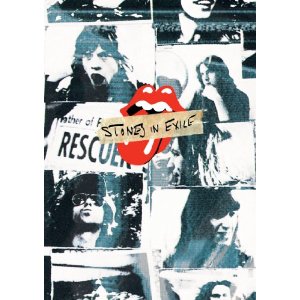
Passion Pictures
As the famous story goes, the Rolling Stones left their English homeland for France in the early 1970s due to exorbitant tax rates placed on the wealthy. The rates were so astronomical that some higher income brackets required a 90% slice on annual revenue. Running away from their own country, the Stones recorded what would become one of their all-time classic albums. Exile on Main Street is their only studio double LP, and the work stands as a landmark example of what can happen when a group of seasoned musicians is forced to just “get on with it,” and somehow creates a timeless work for the ages, while consolidating their identity and influences into a single defined statement.
What is not so famous is how the hell they recorded all of this monumental magic in the basement of guitarist Keith Richards’ rented 19th century massive mansion on the water known as Nellcôte in Villefranche-sur-Mer. Stones in Exile, the one-hour DVD which is a stand alone purchase, and is also accompanied by the newly remastered 1972 double album with additional tracks edition, is a fascinating look back at that bygone era. Director Steven Kijak gathered together all of the footage from that timeframe in France, and, coupled with photographs, many of which were taken by Robert Frank (who created the imagery for the album artwork, and helmed the 1972 concert and behind-the-scenes film, Cocksucker Blues, an unreleased document, which is also one of the finest films about the Stones in existence), .helped to tell a story of mansion, madness and music.
It was the early 1970s, and the Stones were at the peak of their drug and alcohol-influenced chaotic reign. The documentary shows the extraordinary decadence which lay at the roots of the band’s daily lives. The film also circles around the music that the Stones appreciated, and, in turn, coaxed them to create such a formidable piece of work such as Exile on Main Street: American blues, country music, and raw rock ‘n’ roll.
To Kijak’s credit, what Stones in Exile doesn’t pretend to define is just how the band managed to create such a career-defining masterwork (albeit one that was given a lukewarm reception from fans and critics upon its initial release). Instead, through modern interviews with Stones members past (Bill Wyman and Mick Taylor are on hand in brief snippets) and present (Mick Jagger, Richards, and Charlie Watts, sans Ronnie Wood, who would join the Stones in 1975), and other occasional Stones key players like hornsmith Bobby Keyes, producer Jimmy Miller, and Richards’ ex-partner Anita Pallenberg, Kijak captures the spirit of that long gone moment, and shows how a group of highly successful musicians, tax-banished from their own homes, dazed and drunk and zonked from numerous intoxicants, could lay down hundreds of hours of numerous bits of songs in an often claustrophobic environment with musicians and various hangers-on all sharing the same space as the Glimmer Twins offered this final triumphant moment. In the mid-70s, the Rolling Stones entered a period of artistic malaise, as Richards’ smack habit spiralled out of control, eventually ending, but Jagger and Richards never regained their ability to crystallize their art like they did on Exile on Main St..



No Comments comments associated with this post